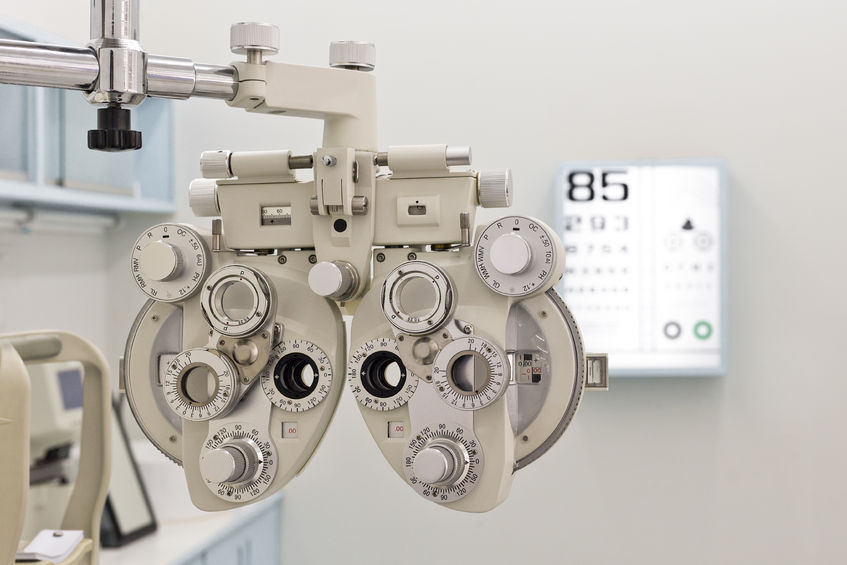We need to rebrand our industry in a way that creates interest and excitement about what we do and the lives we touch.
The future of our industry is something I am fiercely passionate about. As someone who has benefited from our business for the past 28 years, and seen much from inside the conference room to the front lines, I’m convinced that there is so much more we can, should and must begin to do to meet the changing needs of our seniors and our society. I often think that the depth of my conviction lays in the creeping realization that one day (too soon) I myself may be in need of the very services and environments that we provide.
We need to rebrand our industry in a way that creates interest and excitement about what we do and the lives we touch.
Optically speaking, an image makeover for our industry is in order. I believe we’re still too often painted with the worn stereotype of an “old folks’ home,” and perhaps the shoe is beginning to fit.
Seeking out and creating partnership opportunities with higher education institutions to develop innovative approaches and programming to deal with dementia and the issues of aging is a fertile and mostly under-planted field. Students interested in aging, brain disorders, Alzheimer’s disease and other dementias as well as psycho-social studies should be targeted for internships. An ad campaign today is forgotten tomorrow, but creating awareness of the profound nature of what we do in new generation is needed. It can start here.
I think our traditional staffing model, which relies on low-wage front line staff, needs to be rethought.
Many technological advances are now allowing for a wholesale restructuring of how we approach the issue of staffing. Although high tech will never replace high touch, I believe the coupling of these has tremendous potential to advance staffing efficiencies, allowing for the opportunity to upgrade the quality and experience of staff, while concurrently improving care and services.
Advances for monitoring physical well-being such as wearable technology (powered by wireless charging) in undergarments, shirts, etc. will improve data collection and actionable information by recording and reporting indicators such as blood pressure, blood sugar levels, temperatures, heart rate. These types of wearable technologies will also provide real time alerts for improved incontinence care and the ability to record and act upon sleeping and waking patterns.
This integration of technology must occur in all areas of our business.
We must recognize that as an industry, we’ve been slow to embrace technological advances, favoring traditional models that reflect the comfort levels of our residents. As the next generation of residents move-in – a generation whose use and knowledge of technology is exponentially higher than ever before – community programming and amenities will need to reflect and accommodate these life experiences and desires.
These points of integration must prioritize programming and activities in the community. Long gone are communities who featured the three B’s of Bible Study, Bingo and Birthday parties. Fading quickly are those that rely primarily upon Raised Gardening, Wii Bowling and Movie Nights. While elements of these more traditional activities will remain and still attract a niche consumer, increasing desires for virtual activities, Skype technology and advanced touch screen and wireless access to the internet will become demands which will place many providers at an initial competitive disadvantage and eventually result in the extinction of today’s conventional model.
This sea change will be caused by my generation, because we are selfish…and because we have been successful at forcing the marketplace to conform to our wants. We want what we want, when we want it when and where we want it. Welcome to me – your future resident.
Need examples? Consider CDs versus I-tunes versus streaming music; or Netflix versus theaters or rental VHS stores; how about e-readers versus bookstores. I can catch a flight to Chicago, park my car, check in, get through security, grab some cash from the ATM, board, grab a bite on a layover, get my rental car and get into my hotel room barely having to speak more than 5 or 10 words to another human. And what’s strange is that that’s the way I like it. The customer driven changes above were disruptive in the extreme to the bookstore, VHS rentals (seen a Blockbuster Video lately), banking and entertainment industries among many.
Senior Housing design will also be impacted to better reflect the amenities and service delivery process the consumer will demand. In the way of a recent example, college campuses have already been experiencing this type of change. To remain competitive and justify higher costs, campuses look like full scale resorts offering many of the same services and amenities. I believe tomorrow’s senior housing environments will look very different than today’s, with designs to provide a multitude of programs and service that are delivered both on and off site.
I also believe that successful operators will embrace the “Hub and Spoke” design, or – alternatively – partner with other providers in order to offer a seamless continuum of programs and service to the consumer; what they want, when they want them, and where they want them.
The “where” is an interesting wrinkle. We will need to find new lines of service delivery that will allow tomorrow’s seniors greater choice of where they receive services (at least for the initial leg of the journey). Increasing pressure to stay at home longer will force innovation in how we deliver care and services for seniors. It will open up new avenues of ancillary services that have me jazzed as an operator and excited as a creative thinker – most importantly, it has instilled in me a sense of urgency to move our industry into this next stage of our evolution (so it’s ready for me).
In fact, this should be the main driver for all of us fortunate to be working in this business. Yes, we obviously do our best to serve those currently in our care, but we must also consider how and where we can make the changes in our business that we would want if we were the residents being served.
Because soon, we will be.
My cynical nature also tells me that the positioning and growth of ACOs will continue to evolve concurrent with the Affordable Care Act’s continued roll out and cracking of our fragile economy. Cost containment – particularly at the latter stages of life – will garner increasing attention from those holding the purse strings – Europe is slightly ahead of us in positioning for this inevitability.
Cultural pressures will also place pressure on these type of organizational structures. Unfortunately our generation has failed to embrace the concept of self-sufficiency as previous generations did, favoring instead the reliance upon governmental subsidies and programs. The combination of selfishness and the “entitlement” mentality poisoning our society will require not only private sector partnerships, but may also force government and private partnerships in order to address the increasing amount of seniors who have not saved for their sunset years.
Sadly, the percentage of our population with LTC insurance or who have planned well for retirement is small. The burdens we will be placing on our children and grandchildren – such as the burgeoning spending on entitlement programs, unsustainable levels of debt and failure to save for the future (both as a country and as individuals) are serious and unconscionable.
Disruptive innovation is coming to senior housing, driven of necessity and desire. Time to get ready.
John








